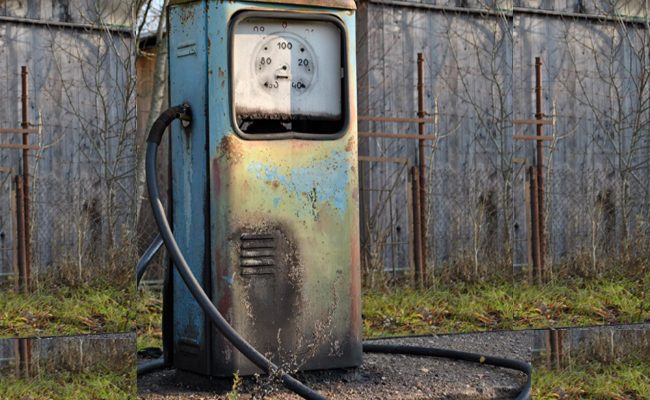
In the constantly evolving real estate market, one trend that’s been steadily gaining traction is the integration of environmental considerations into residential property development and management. Today’s homeowners, more than ever before, are keen on reducing their ecological footprint, and this is reflected in emerging property trends. From energy efficiency to eco-friendly construction materials, the modern residential property landscape is undergoing a green transformation.
Energy-efficient Homes
The shift towards energy efficiency is one of the most noticeable trends in residential properties. Homebuyers are increasingly interested in homes equipped with energy-saving appliances, solar panels, efficient HVAC systems, and well-insulated walls and roofs. This trend doesn’t just stem from a desire to protect the environment; it’s also about cutting down on energy bills.
Green Building Materials
Traditional construction materials are giving way to sustainable alternatives. Recycled, reclaimed, and renewable materials are becoming the norm in home construction. Not only do these materials reduce the environmental impact of construction, but they also often offer better durability and can contribute to healthier indoor air quality.
Water Conservation Systems
With water scarcity becoming a pressing issue globally, modern homes are integrating systems designed for water conservation. This includes rainwater harvesting systems, efficient plumbing fixtures, and drought-tolerant landscaping.
Brownfield Redevelopment
One trend that’s gained considerable momentum is the redevelopment of brownfields – previously used industrial sites that may be contaminated. Transforming these spaces into residential areas, after adequate cleanup and remediation, is both an environmental and urban revitalization strategy.
This is where services like oil tank removal come into play, especially in areas with a rich industrial history, such as New Jersey. In fact, the increasing demand for oil tank removal in New Jersey highlights the importance of making former industrial sites safe and habitable.
Smart Home Systems
The integration of technology into homes extends beyond entertainment and convenience. Smart home systems today allow residents to monitor and optimize their energy and water consumption, automatically adjusting to conserve resources without sacrificing comfort.
Community Green Spaces
Another notable trend is the emphasis on community green spaces in residential developments. These spaces offer both recreational areas for residents and also contribute to local biodiversity, improve air quality, and reduce the urban heat island effect.
Indoor Air Quality
Modern homeowners are becoming increasingly aware of the importance of indoor air quality. Consequently, there’s a rise in demand for homes with good ventilation, low-VOC materials, and indoor plants. Moreover, advanced air purifying systems are becoming a standard feature in many new residential developments.
Sustainable Waste Management
Waste management is no longer an afterthought. New residential developments are actively integrating sustainable waste management solutions right from the design phase. Segregated waste disposal systems, composting facilities, and dedicated spaces for recyclable materials are being incorporated to ensure minimal waste reaches the landfills.
Incorporating Native Vegetation
The choice of vegetation in residential landscapes is undergoing a transformation. There’s an increasing emphasis on incorporating native plants that require less water and are more resistant to local pests. Native vegetation not only requires less maintenance but also supports the local ecosystem, encouraging birds and beneficial insects.
Reducing Stormwater Runoff
Impervious surfaces, such as concrete, can lead to excessive stormwater runoff, causing flooding and eroding natural landscapes. To combat this, many new residential projects are using permeable paving solutions. Along with that, rain gardens and bioswales are integrated into landscapes to naturally absorb and filter the stormwater.
Eco-Friendly Transportation Solutions
With an increasing understanding of the carbon footprint associated with personal vehicles, many residential communities are incorporating eco-friendly transportation solutions. This includes dedicated bicycle lanes, electric vehicle charging stations, and car-sharing programs. Some developments are even strategically positioned near public transportation hubs to reduce residents’ reliance on cars.
Safe Remediation Practices
As communities grow and expand, there’s an increasing need to ensure the land being developed is free from any past contaminants. Especially in places with industrial histories, it’s crucial to carry out proper remediation before any residential development begins. Companies like SimpleTank Services are pivotal in such contexts, offering expertise in areas like oil tank removal and ensuring the ground is safe for future inhabitants.
Adaptive Reuse of Buildings
Instead of demolishing old structures and starting from scratch, there’s a growing trend of adaptively reusing buildings. By preserving the skeleton of old structures, developers can save on materials while reducing the environmental impact of construction. These repurposed spaces often become unique residential offerings in the market, attracting buyers who appreciate a blend of historical and modern elements.
Environmental Education and Awareness
New residential communities are not just integrating green solutions but are also taking steps to educate residents about sustainable living. Workshops on composting, recycling, energy conservation, and more are organized to ensure everyone plays their part in maintaining the eco-friendly ethos of the community.
Final Thoughts
As the real estate sector evolves, the integration of environmental considerations will likely become the standard, rather than the exception. By prioritizing green solutions, developers not only cater to the market demand but also play a significant role in pushing societies towards a more sustainable future. With every green home or community developed, we move one step closer to a harmonious coexistence with the environment.
Leave a Reply